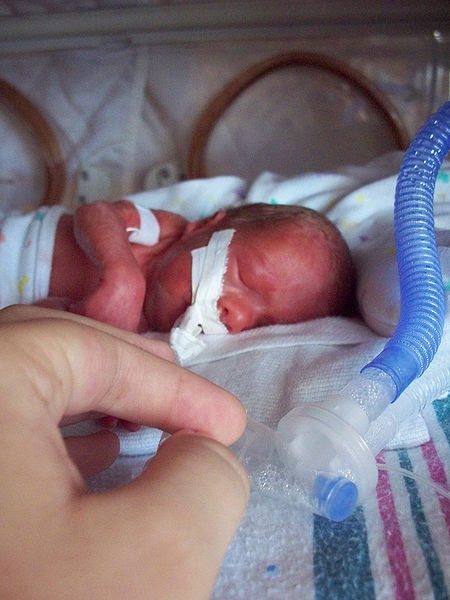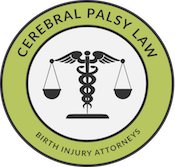What Is Premature Birth?
Premature birth (also known as preterm birth) occurs when a mother gives birth before 37 weeks of gestation. Because premature babies are often born with underdeveloped bodily systems, they are poorly equipped to handle the forces of delivery and life outside the mother’s protective womb. Babies born prematurely are more likely to suffer dangerous birth injuries including brain damage and cerebral palsy (CP). Seizure disorders, hypoxic ischemic encephalopathy (HIE), periventricular leukomalacia (PVL), intellectual and developmental disabilities (I/DD), and cerebral palsy are commonly associated with premature birth.
Whether your child’s permanent injury or cerebral palsy resulted from premature birth or another labor and delivery problem, one of our experienced Michigan cerebral palsy lawyers can help you obtain the financial and emotional support your family deserves. Complete this online contact form for a free evaluation of your child’s cerebral palsy case or call us toll-free at (888) 592-1857. Our Michigan premature birth and cerebral palsy lawyers will answer your legal questions free of charge and, if Michigan Cerebral Palsy Attorneys takes your case, you will not be charged until our attorneys win or settle in your favor.
What Injuries Are Associated with Premature Birth?
 The fragility of an underdeveloped newborn coupled with the often rough means of preterm delivery put premature babies at high risks for developing a number of injuries and complications. For this reason, it is important that medical professionals quickly prevent, diagnose, and treat the injuries and conditions associated with preterm birth.
The fragility of an underdeveloped newborn coupled with the often rough means of preterm delivery put premature babies at high risks for developing a number of injuries and complications. For this reason, it is important that medical professionals quickly prevent, diagnose, and treat the injuries and conditions associated with preterm birth.
Listed below are the injuries associated with premature birth:
- Undeveloped/immature organs and systems: Babies with partially developed organs (including the liver and kidneys) and fragile blood vessels have difficulty fighting the typical birth insults, and risk high bilirubin levels, infection, head trauma and oxygen deprivation.
- Hypoxic ischemic encephalopathy (HIE): HIE is a serious condition characterized by the loss of oxygen to a baby’s brain. Because a baby’s lungs mature between 32 and 34 weeks, premature babies without proper medical assistance lose oxygen flow to the brain and face the risk of cerebral palsy.
- Over-ventilation and hypocarbia injuries: Many premature babies require breathing machines (ventilators) to assist the flow of oxygen to the brain, but improper ventilation can lead to serious brain damage. When a baby receives breaths too large or too fast, she releases too much carbon dioxide and sustains brain injuries.
- Surfactant administration complications: Respiratory Distress Syndrome (RDS) makes breathing difficult for a premature baby. With RDS, a baby does not produce enough surfactant, which is the material that allows the inner surface of the lungs to expand. Thus, physicians inject surfactant. When injected improperly, surfactant can cause over-ventilation and reduced carbon dioxide levels which lead to brain damage and cerebral palsy.
- Neonatal hypoglycemia (NH): Premature babies risk developing neonatal hypoglycemia, a condition in which the baby’s glucose (blood sugar) falls to unsafe levels after birth. Because babies’ brains require glucose energy for basic functioning and development, insufficient glucose levels in the brain result in the loss of brain cells, and ultimately severe brain damage and/or cerebral palsy. While the hazards of neonatal hypoglycemia are severe, diagnosis and treatment are simple and accessible.
- Hyperbilirubinema (jaundice) and kernicterus: Jaundice is one of the most common health problems in premature babies. Jaundice is the yellowing of the skin and eyes from excess levels of bilirubin (a byproduct of red blood cell breakdown). if not properly treated, jaundice may escalate to kernicterus, which can result in brain damage and cerebral palsy.
- Apnea of prematurity (AOP): Apnea of prematurity, or AOP, occurs when a premature baby’s central nervous system is not yet developed enough to support controlled and continual breathing. Symptoms of AOP include regular, fast, or deep breathing followed by periods of shallow or suspended breathing. These respiratory pauses, typically lasting from 15 to 20 seconds, result in diminished heart rate (bradycardia), decreased oxygen saturation (hypoxia), and an accompanying pale, bluish tone to the skin. If left untreated, apnea of prematurity limits oxygen to the brain and may leave the baby with brain injury and cerebral palsy.
- Bronchopulmonary dysplasia (BPD): Because a premature baby’s lungs lack the durability of fully developed lungs, improper ventilator settings may damage or scar the baby’s lung tissues and lead to BPD, a chronic lung disease. If doctors fail to take careful precautions to monitor a baby’s blood gases and chest while he is on the ventilator, the increased pressure to his lungs can cause oxygen deprivation and resultant cerebral palsy.
- Hemodynamic (blood circulation) complications: Premature babies may suffer a number of circulation limitations—for instance, premature babies may experience low blood pressure (hypotension) due to respiratory distress syndrome (RDS), capillary leak syndrome, and low blood volume (hypovolemia). While measures can eliminate the risk of hemodynamic complications, prolonged or very low blood pressure can cause decreased blood flow to the brain, resulting in brain damage and cerebral palsy.
- Intracranial hemorrhages (brain bleeds): Difficult deliveries (such as those using delivery assistance tools or those in the breech presentation) may lead to head trauma and brain bleeds if not properly managed by physicians.
- Infection: In preterm delivery, a mother’s water breaks early in a condition known as the premature rupture of membranes (PROM). The absence of the protective amniotic fluid leaves the baby susceptible to different infections such as chorioamnionitis, neonatal HSV, encephalitis (inflammation of the brain), Group B Streptococcus, sepsis, and meningitis.
What Causes Premature Birth?
- Incompetent Cervix: An incompetent (or insufficient) cervix is a serious medical condition that occurs when weak cervical tissues contribute to a miscarriage or premature birth. Growing pressures on the cervix during pregnancy cause it to open early, and the condition is thought to cause as many as 20%-25% of premature deliveries in the second trimester.
- Multiple births: Carrying more than one fetus during a pregnancy often heightens the risk for premature birth. Growth restrictions lead to smaller than average babies that have heightened risks for infection and disabilities during premature deliveries.
- Diminished progesterone levels: Progesterone is the hormone that maintains a woman’s pregnancy, and a reduction of its levels results in early labor or miscarriage.
- Premature rupture of membranes (PROM): Early rupture of the amniotic sac results in nearly 4% of all preterm births.
- Infection
- Kidney disease
- Substance abuse
- Hypertension (high blood pressure) or preeclampsia (pregnancy-induced high blood pressure)
- Diabetes or gestational diabetes
Treating and Managing Premature Deliveries
It is a physician’s duty to identify and timely treat potential medical conditions that may lead to prematurity. The following procedures have been found to treat and/or manage premature birth:
- Progesterone treatment: Progesterone is a hormone that helps women become and remain pregnant, so injecting or consuming supplemental progesterone hormones has been proven to reduce the risk of preterm birth.
- Cervical cerclage placement for incompetent (short) cervices: In cervical cerclage surgery, surgeons reinforce and lengthen an incompetent cervix by inserting a stitch in the weak area of the cervix anytime from week 14 to 28 of the pregnancy. The stitch is taken out between weeks 36 and 38 to avoid issues during labor. Doctors should perform physical exams to diagnose an incompetent cervix and assess a mother’s risk for cervical cerclage based on previous miscarriages or preterm births, short cervical lengths, and early cervical dilation.
- Serial ultrasound readings should be taken every two weeks to monitor cervical activity for early expansion.
- In-utero steroids: If doctors anticipate a preterm delivery, they can prevent the injuries associated with premature birth (like sepsis, brain bleeds, and PVL) by prescribing different steroids to the mother.
- Magnesium sulfate: Like steroids, magnesium sulfate doses in-utero can prevent cerebral palsy. Magnesium sulfate primarily protects the baby’s developing brain by increasing and stabilizing blood flow and blood pressure to the brain and blocking a brain receptor that is released when brain-damaging chemicals are present in a premature baby.
Legal Help for Premature Birth and Cerebral Palsy
While the injuries and complications of premature birth are severe, medical professionals can easily avoid most with basic medical tests and preventative measures. Physicians are obligated to carefully evaluate and test for factors that may lead to preterm birth and to closely monitor patients that show risk. If the mother and baby are not closely monitored and standards of care are not followed, it is negligence, and if this negligence causes permanent injury in the baby, it is medical malpractice.
For reference, the following scenarios reflect negligence:
- Failure to properly assess and test for the risks factors, causes, signs, and symptoms of premature birth
- Mismanagement of ventilators, surfactant injections, and improper use of delivery assistance tools on premature babies
- Failure to diagnose and treat maternal or fetal conditions or infections that lead to preterm birth
- Failure to administer progesterone to a woman exhibiting risks for preterm delivery or diminished progesterone levels
The birth injury lawyers at Michigan Cerebral Palsy Attorneys have years of specific experience handling medical malpractice cases related to premature birth. To read more about the multimillion dollar cases won by our birth injury experts, we encourage you to visit our Verdicts & Settlements section. There, you’ll find cases related to the failure of medical professionals to prevent early labor, as well as cases regarding overventilation injuries.
If your child was born prematurely and suffers from cerebral palsy, call an experienced Michigan cerebral palsy attorney. Whether you recognize these incidents of negligence from your own delivery or not, our highly skilled birth injury lawyers will review your child’s case, answer your questions, and inform you of your legal options.
We handle cases throughout the U.S.
Call our offices toll-free at (888) 592-1857
Press the Live Chat tab to the left
Complete this online contact form
Sources:
- Norwitz ER, Robinson JN, Challis JR. The control of labor. N Engl J Med 1999; 341:660.
- Matthews SG, Gibb W, Lye SJ. Endocrine and paracrine regulation of birth at term and preterm. Endocr Rev 2000; 21:514.
- Norwitz ER, Lye SJ. Biology of parturition. In: Creasy RK, Resnick R, Iams JD, et al, eds. Creasy & Resnick’s Maternal-Fetal Medicine, 6th ed. Philadelphia: Elsevier; 2009:69-85.
- Oh SY, Kim CJ, Park I, et al. Progesterone receptor isoform (A/B) ratio of human fetal membranes increases during term parturition. Am J Obstet Gynecol 2005; 193:1156.
- Likis FE, Andrews JC, Woodworth AL, et al. Progestogens for Prevention of Preterm Birth. Comparative Effectiveness Review No. 74. (Prepared by the Vanderbilt Evidence-based Practice Center under Contract No. 290-2007-10065-I). AHRQ Publication No. 12-EHC105-EF. Rockville, MD: Agency for Healthcare Research and Quality. September 2012. www.effectivehealthcare.ahrq.gov/reports/final.cfm.
